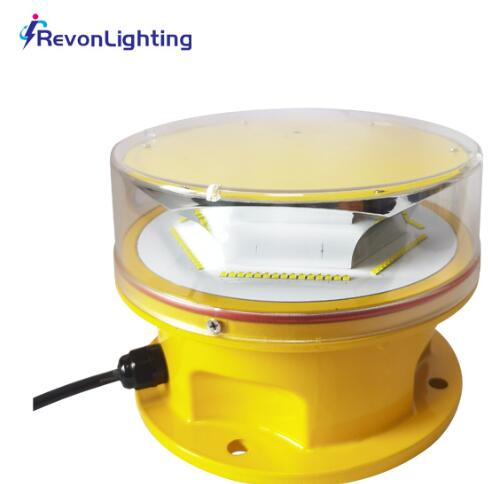Posted: 2024-05-28
LED aviation lights have emerged as a game-changer in the field of aviation safety. These energy-efficient and highly reliable lights have transformed the way aircraft are guided, marked, and illuminated. This article explores the significance, benefits, regulations, and advancements of LED aviation lights, highlighting their pivotal role in ensuring safe air travel.
Importance of LED Aviation Lights:
LED aviation lights serve as critical aids for pilots, air traffic controllers, and ground personnel. They provide essential visual cues, enabling pilots to identify runways, taxiways, and aircraft in low-visibility conditions. These lights are vital for maintaining safe separation between aircraft and guiding them during takeoff, landing, and taxiing operations.
Benefits of LED Technology:
a) Energy Efficiency: LED lights consume significantly less power compared to traditional incandescent lights. They contribute to reducing energy consumption and carbon emissions, making them a sustainable choice for aviation lighting needs.
b) Longevity: LED lights have a longer lifespan compared to conventional lights, reducing the need for frequent replacements and maintenance. This factor translates into cost savings and fewer disruptions to airport operations.
c) Enhanced Visibility: LED lights emit a bright, focused beam of light, making them highly visible even in adverse weather conditions. This improved visibility enhances pilot awareness and reduces the risk of accidents caused by poor lighting.

Regulatory Standards and Compliance:
Aviation authorities, such as the Federal Aviation Administration (FAA) in the United States and the International Civil Aviation Organization (ICAO) globally, have established regulations and standards for LED aviation lights to ensure uniformity and effectiveness. These standards cover factors such as light intensity, color, flash characteristics, and placement, promoting standardized safety practices across the industry.
Advancements in LED Aviation Lights:
a) Smart Lighting Systems: LED aviation lights can be integrated into smart lighting systems, enabling remote monitoring and control. These systems provide real-time information on the status of lights, enabling timely maintenance and reducing downtime.
b) Runway Lighting: LED technology has revolutionized runway lighting by introducing precision approach path indicators (PAPI) and runway edge lights. These lights provide accurate guidance to pilots during approach and landing, enhancing safety and reducing the risk of runway incursions.
c) Obstacle Lighting: LED lights are extensively used for marking tall structures and obstacles, such as communication towers and wind turbines. These lights improve visibility for pilots, helping them avoid collisions and navigate safely during low-visibility conditions.
| 1 | 2 |
| 34 | 35 |
| LED Aviation Lights | 44 |
Future Trends and Considerations:
The continuous evolution of LED technology offers promising future prospects for aviation lighting. Advancements in adaptive lighting systems, improved color rendering, and greater integration with air traffic management systems will further enhance safety and operational efficiency in air travel.
Conclusion:
LED aviation lights have revolutionized aviation safety by providing efficient, long-lasting, and highly visible lighting solutions. As technology continues to advance, the aviation industry will witness further innovations and widespread adoption of LED lighting systems. LED lights will continue to play a pivotal role in ensuring safe air travel, reducing energy consumption, and minimizing environmental impact.